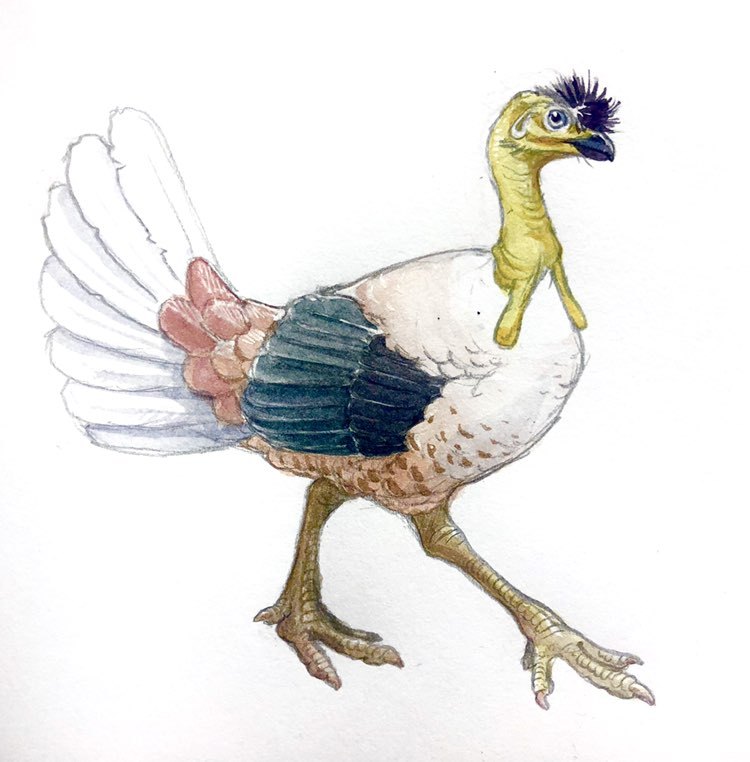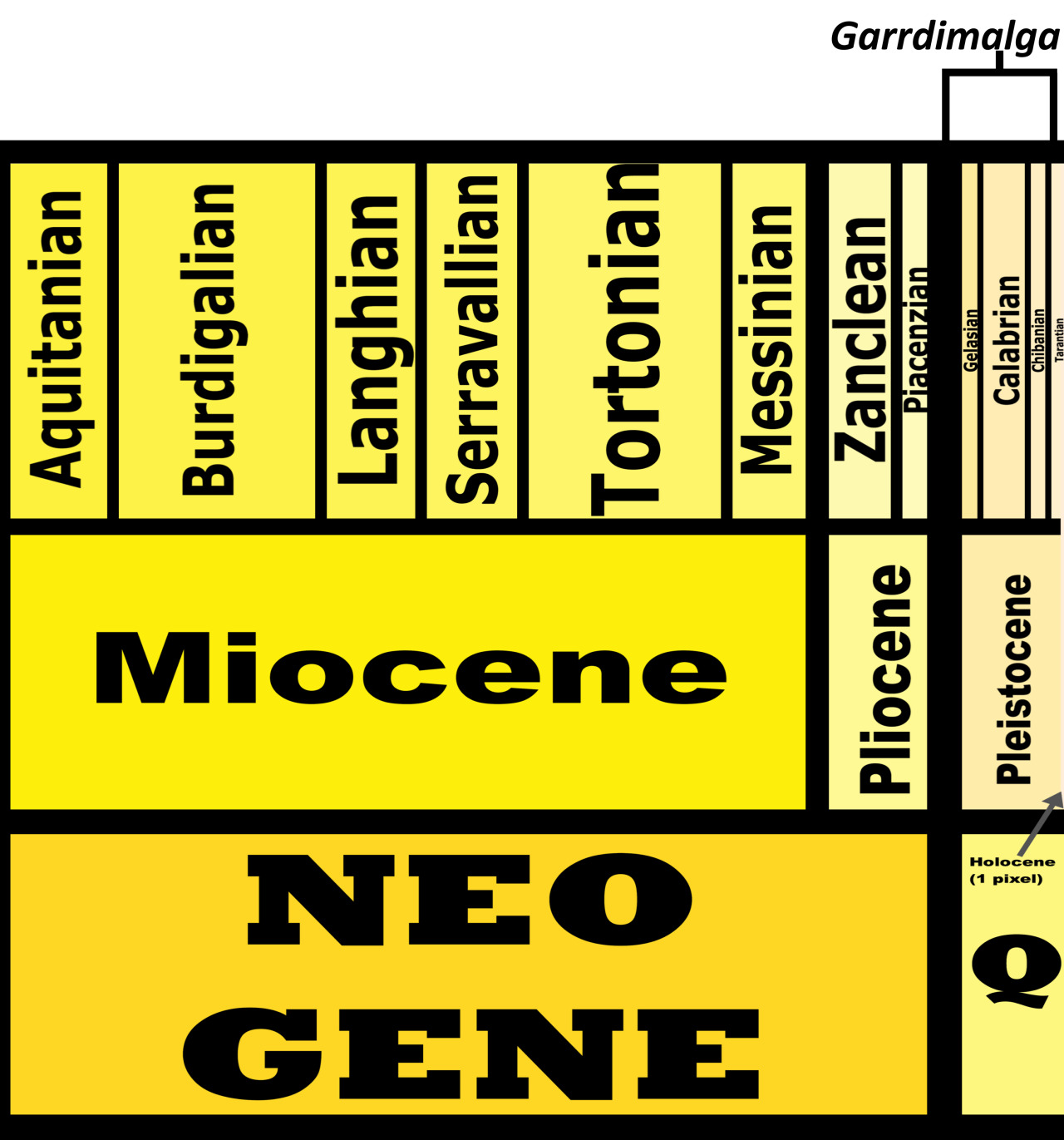
By Ripley Cook
Etymology: Emu Waterhole
First Described By: Shute et al., 2017
Classification: Dinosauromorpha, Dinosauriformes, Dracohors, Dinosauria, Saurischia, Eusaurischia, Theropoda, Neotheropoda, Averostra, Tetanurae, Orionides, Avetheropoda, Coelurosauria, Tyrannoraptora, Maniraptoromorpha, Maniraptoriformes, Maniraptora, Pennaraptora, Paraves, Eumaniraptora, Averaptora, Avialae, Euavialae, Avebrevicauda, Pygostaylia, Ornithothoraces, Euornithes, Ornithuromorpha, Ornithurae, Neornithes, Neognathae, Galloanserae, Pangalliformes, Galliformes, Megapodiidae
Status: Extinct
Time and Place: Garrdimalga lived sometime in the Pleistocene, though the exact age is uncertain; so, anytime between 2.58 million and 11,700 years ago


Garrdimalga was found in the Curramulka Quarry in South Australia, shown below

Physical Description: Garrdimalga was a Megapode, a group of chicken-like dinosaurs that look quite a lot like other landfowl (for example, one living species is even called a Brushturkey), however, they are distinct from all other dinosaurs due to their unique method of breeding (which I shall discuss more below). Garrdimalga was a unique, Ice Age species of Megapode, known from bones of the wing, shoulders, and feet, and part of the skull. Garrdimalga had wings somewhat more twisted towards the head than other Megapodes, and it had somewhat different twisted foot bones than living members of this group. It had a short beak, large wing bones, and general similarity to other extinct, giant, flying, turkey-like Megapodes in Australia during the Pleistocene. Probably larger than most living species of Megapode, due to its bone measurements as well as large size commonly seen in Ice Age species of animals, to deal with the glaciation and weird weather patterns.
Diet: Like other Megapodes, Garrdimalga was probably omnivorous, though specifics are not known.
Behavior: Megapodes today exhibit a very unique behavior in that they build mounds for their eggs, which are incubated with rotting vegetation and heat from the ground and volcanic activity. The adults then do not take care of the young, and the hatched chicks are superprecocial, able to take care of themselves immediately and even fly at hatching. Garrdimalga probably also exhibited this behavior. It probably also was able to fly. Little else is known about its behavior at this time, though it probably would have acted like modern megapodes in other ways as well.
Ecosystem: This area would have been mostly a large, river-associated plain, dried out due to the extensive glaciation at the time. This would have greatly affected the life history of Garrdimalga depending on the time in the glaciation cycle. A variety of large, weird marsupials would have shared the environment with Garrdimalga, as well as other large Ice Age birds (including other large Megapodes).
Other: Garrdimalga was recently described and the material was not good enough for a phylogenetic analysis; more studies are needed to learn more about this large Ice Age Megapode.
~ By Meig Dickson
Source
Shute, E., G. J. Prideaux, T. H. Worthy. 2017. Taxonomic Review of the Late Cenozoic Megapodes (Galliformes: Megapodiidae) of Australia. Royal Society Open Science 4: 17023
